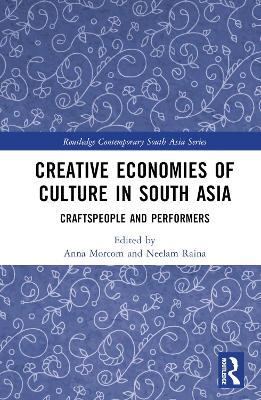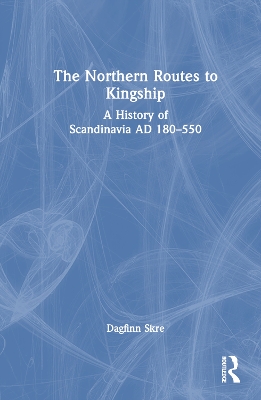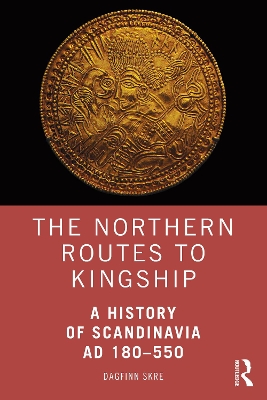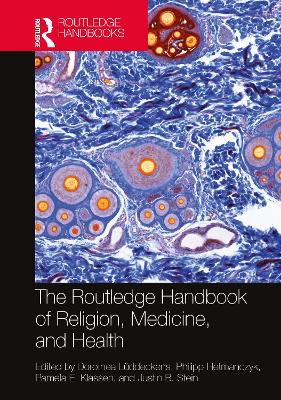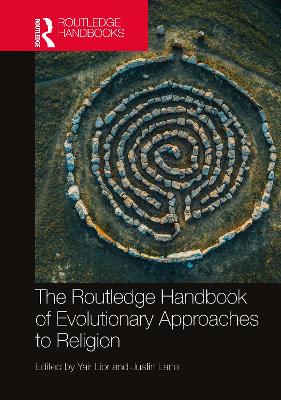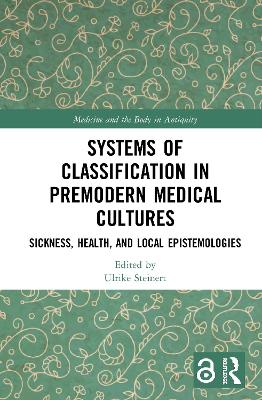Routledge Handbook of Archaeothanatology
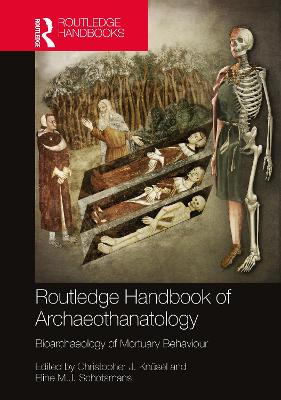 -10%
portes grátis
-10%
portes grátis
Routledge Handbook of Archaeothanatology
Bioarchaeology of Mortuary Behaviour
Schotsmans, Eline M. J.; Knuesel, Christopher J.
Taylor & Francis Ltd
04/2022
724
Dura
Inglês
9781138492424
15 a 20 dias
Descrição não disponível.
Introduction: Archaeothanatology, funerary archaeology and bioarchaeology: perspectives on the long view of death and the dead
Christopher J. Knuesel and Eline M.J. Schotsmans
Part I: Archaeothanatology - methodological guidelines
1. Methodological guidelines for archaeothanatological practice
Frederique Blaizot
2. A tale of two worlds: Terminologies in archaeothanatology
Bruno Boulestin
3. Words between two worlds: Collective graves and related issues in burial terminology
Bruno Boulestin and Patrice Courtaud
4. Secondary cremation burials of past populations: Some methodological procedures for excavation, bone fragment identification and sex determination
Germaine Depierre
5. The accompanying dead
Bruno Boulestin
6. Denied funeral rites: The contribution of the archaeothanatological approach
Aurore Schmitt
Part II: Period-specific applications
7. Early primary burials: Evidence from Southwestern Asia
Anne-marie Tillier
8. The earliest European burials
Bruno Maureille
9. Beyond the formal analysis of funerary practices? Archaeothanatology as a reflexive tool for considering the role of the dead amongst the living: A Natufian case study
Fanny Bocquentin
10. What can archaeothanatology add? A case study of new knowledge and theoretical implications in the re-study of Mesolithic burials in Sweden and Denmark
Liv Nilsson Stutz
11. Neolithic burials of infants and children
Melie Le Roy and Stephane Rottier
12. Defining collective burials: Three case studies
Aurore Schmitt
13. Different burial types but common practice: The case of the funerary complex at Barbuise and La Saulsotte (France) at the beginning of the Late Bronze Age
Stephane Rottier
14. Deathways of the Durotriges: Reconstructing identity through archaeothanatology in later Iron Age southern Britain
Karina Gerdau-Radonic, Janne Sperrevik, Martin Smith, Paul Cheetham, and Miles Russell
15. The Roman cemetery of Porta Nocera at Pompeii: The contribution of osteological re-associations to the study of secondary cremation burials
Henri Duday
16. Reopening graves for the removal of objects and bones: Cultural practices and looting
Edeltraud Aspoeck, Karina Gerdau-Radonic and Astrid Noterman
17. Cluniac funerary practices
Eleanor Williams
18. 'Bring out your dead': Funerary and public health practices in times of epidemic disease
Dominique Castex and Sacha Kacki
19. Jewish funerary practices in Medieval Europe
Philippe Blanchard
20. Islamic burials: Muslim graves and graves of Muslims
Yves Gleize
21. Recognising a slave cemetery: An example from colonial-period Guadeloupe, Lesser Antilles
Patrice Courtaud and Thomas Romon
Part III: Archaeothanatology of associated remains
22. Archaeothanatological approaches to associated remains in funerary contexts in Europe: An overview
Isabelle Cartron and Aurelie Zemour
23. An archaeothanatological approach to the identification of late Anglo-Saxon burials in wooden containers
Emma C. Green
24. Ceramic studies in funerary contexts from Roman Gaul
Christine Bonnet
25. Animal remains in burials
Patrice Meniel
26. The walking dead - life after death: archaeoentomological evidence in a Roman catacomb: (Saints Marcellinus and Peter, central area, 1st-3rd century AD)
Jean-Bernard Huchet and Dominique Castex
Part IV: Applied sciences, experiments and legal considerations
27. From flesh to bone: building bridges between taphonomy, archaeothanatology and forensic science for a better understanding of mortuary practices
Eline M.J. Schotsmans, Patrice Georges-Zimmerman, Maiken Ueland, and Boyd B. Dent
28. Exploring the use of actualistic forensic taphonomy in the study of (forensic) archaeological human burials: An actualistic experimental research programme at the Forensic Anthropology Center at Texas State University (FACTS), San Marcos, Texas
Hayley L. Mickleburgh, Daniel J. Wescott, Sarah Gluschitz, and M. Victor Klinkenberg
29. An experimental approach to the interpretation of prehistoric cremation and cremation burials
Mogens B. Henriksen
30. The taphonomic and archaeothanatological potentials of diagenetic alterations of archaeological bone
Thomas J. Booth, David Broenniman, Richard Madgwick, and Cordula Portmann
31. 3D models as useful tools in archaeothanatology
Geraldine Sachau-Carcel
32. Use of archaeothanatology in preventive (salvage/rescue) archaeology and field research archaeology
Mark Guillon
33. Managing and reburying ancient human remains in France: From legal and ethical concerns to field practices
Gaelle Clavandier
Part V: Lexicon of archaeothanatological terms
34. Lexicon of terms used in archaeothanatology: A work still in the process of becoming
Christopher J. Knuesel, Karina Gerdau-Radonic, and Eline M.J. Schotsmans
Christopher J. Knuesel and Eline M.J. Schotsmans
Part I: Archaeothanatology - methodological guidelines
1. Methodological guidelines for archaeothanatological practice
Frederique Blaizot
2. A tale of two worlds: Terminologies in archaeothanatology
Bruno Boulestin
3. Words between two worlds: Collective graves and related issues in burial terminology
Bruno Boulestin and Patrice Courtaud
4. Secondary cremation burials of past populations: Some methodological procedures for excavation, bone fragment identification and sex determination
Germaine Depierre
5. The accompanying dead
Bruno Boulestin
6. Denied funeral rites: The contribution of the archaeothanatological approach
Aurore Schmitt
Part II: Period-specific applications
7. Early primary burials: Evidence from Southwestern Asia
Anne-marie Tillier
8. The earliest European burials
Bruno Maureille
9. Beyond the formal analysis of funerary practices? Archaeothanatology as a reflexive tool for considering the role of the dead amongst the living: A Natufian case study
Fanny Bocquentin
10. What can archaeothanatology add? A case study of new knowledge and theoretical implications in the re-study of Mesolithic burials in Sweden and Denmark
Liv Nilsson Stutz
11. Neolithic burials of infants and children
Melie Le Roy and Stephane Rottier
12. Defining collective burials: Three case studies
Aurore Schmitt
13. Different burial types but common practice: The case of the funerary complex at Barbuise and La Saulsotte (France) at the beginning of the Late Bronze Age
Stephane Rottier
14. Deathways of the Durotriges: Reconstructing identity through archaeothanatology in later Iron Age southern Britain
Karina Gerdau-Radonic, Janne Sperrevik, Martin Smith, Paul Cheetham, and Miles Russell
15. The Roman cemetery of Porta Nocera at Pompeii: The contribution of osteological re-associations to the study of secondary cremation burials
Henri Duday
16. Reopening graves for the removal of objects and bones: Cultural practices and looting
Edeltraud Aspoeck, Karina Gerdau-Radonic and Astrid Noterman
17. Cluniac funerary practices
Eleanor Williams
18. 'Bring out your dead': Funerary and public health practices in times of epidemic disease
Dominique Castex and Sacha Kacki
19. Jewish funerary practices in Medieval Europe
Philippe Blanchard
20. Islamic burials: Muslim graves and graves of Muslims
Yves Gleize
21. Recognising a slave cemetery: An example from colonial-period Guadeloupe, Lesser Antilles
Patrice Courtaud and Thomas Romon
Part III: Archaeothanatology of associated remains
22. Archaeothanatological approaches to associated remains in funerary contexts in Europe: An overview
Isabelle Cartron and Aurelie Zemour
23. An archaeothanatological approach to the identification of late Anglo-Saxon burials in wooden containers
Emma C. Green
24. Ceramic studies in funerary contexts from Roman Gaul
Christine Bonnet
25. Animal remains in burials
Patrice Meniel
26. The walking dead - life after death: archaeoentomological evidence in a Roman catacomb: (Saints Marcellinus and Peter, central area, 1st-3rd century AD)
Jean-Bernard Huchet and Dominique Castex
Part IV: Applied sciences, experiments and legal considerations
27. From flesh to bone: building bridges between taphonomy, archaeothanatology and forensic science for a better understanding of mortuary practices
Eline M.J. Schotsmans, Patrice Georges-Zimmerman, Maiken Ueland, and Boyd B. Dent
28. Exploring the use of actualistic forensic taphonomy in the study of (forensic) archaeological human burials: An actualistic experimental research programme at the Forensic Anthropology Center at Texas State University (FACTS), San Marcos, Texas
Hayley L. Mickleburgh, Daniel J. Wescott, Sarah Gluschitz, and M. Victor Klinkenberg
29. An experimental approach to the interpretation of prehistoric cremation and cremation burials
Mogens B. Henriksen
30. The taphonomic and archaeothanatological potentials of diagenetic alterations of archaeological bone
Thomas J. Booth, David Broenniman, Richard Madgwick, and Cordula Portmann
31. 3D models as useful tools in archaeothanatology
Geraldine Sachau-Carcel
32. Use of archaeothanatology in preventive (salvage/rescue) archaeology and field research archaeology
Mark Guillon
33. Managing and reburying ancient human remains in France: From legal and ethical concerns to field practices
Gaelle Clavandier
Part V: Lexicon of archaeothanatological terms
34. Lexicon of terms used in archaeothanatology: A work still in the process of becoming
Christopher J. Knuesel, Karina Gerdau-Radonic, and Eline M.J. Schotsmans
Este título pertence ao(s) assunto(s) indicados(s). Para ver outros títulos clique no assunto desejado.
Mortuary Behaviour;Funerary Practices;Human Remains;Funerary Treatment;Ossa Coxae;Funerary Archaeology;Collective Burial;Skeletal Elements;Institut National De Recherches;Mortuary Practices;Skeletal Remains;Multiple Burials;Grave Goods;Archaeological Contexts;Primary Burials;Funerary Spaces;Temporo Mandibular Joints;Burial Pit;Funerary Deposit;Taphonomic Analysis;Bone Displacement;Cremation Burials;Funerary Context;Sacro Iliac Joints;9th Century Ad
Introduction: Archaeothanatology, funerary archaeology and bioarchaeology: perspectives on the long view of death and the dead
Christopher J. Knuesel and Eline M.J. Schotsmans
Part I: Archaeothanatology - methodological guidelines
1. Methodological guidelines for archaeothanatological practice
Frederique Blaizot
2. A tale of two worlds: Terminologies in archaeothanatology
Bruno Boulestin
3. Words between two worlds: Collective graves and related issues in burial terminology
Bruno Boulestin and Patrice Courtaud
4. Secondary cremation burials of past populations: Some methodological procedures for excavation, bone fragment identification and sex determination
Germaine Depierre
5. The accompanying dead
Bruno Boulestin
6. Denied funeral rites: The contribution of the archaeothanatological approach
Aurore Schmitt
Part II: Period-specific applications
7. Early primary burials: Evidence from Southwestern Asia
Anne-marie Tillier
8. The earliest European burials
Bruno Maureille
9. Beyond the formal analysis of funerary practices? Archaeothanatology as a reflexive tool for considering the role of the dead amongst the living: A Natufian case study
Fanny Bocquentin
10. What can archaeothanatology add? A case study of new knowledge and theoretical implications in the re-study of Mesolithic burials in Sweden and Denmark
Liv Nilsson Stutz
11. Neolithic burials of infants and children
Melie Le Roy and Stephane Rottier
12. Defining collective burials: Three case studies
Aurore Schmitt
13. Different burial types but common practice: The case of the funerary complex at Barbuise and La Saulsotte (France) at the beginning of the Late Bronze Age
Stephane Rottier
14. Deathways of the Durotriges: Reconstructing identity through archaeothanatology in later Iron Age southern Britain
Karina Gerdau-Radonic, Janne Sperrevik, Martin Smith, Paul Cheetham, and Miles Russell
15. The Roman cemetery of Porta Nocera at Pompeii: The contribution of osteological re-associations to the study of secondary cremation burials
Henri Duday
16. Reopening graves for the removal of objects and bones: Cultural practices and looting
Edeltraud Aspoeck, Karina Gerdau-Radonic and Astrid Noterman
17. Cluniac funerary practices
Eleanor Williams
18. 'Bring out your dead': Funerary and public health practices in times of epidemic disease
Dominique Castex and Sacha Kacki
19. Jewish funerary practices in Medieval Europe
Philippe Blanchard
20. Islamic burials: Muslim graves and graves of Muslims
Yves Gleize
21. Recognising a slave cemetery: An example from colonial-period Guadeloupe, Lesser Antilles
Patrice Courtaud and Thomas Romon
Part III: Archaeothanatology of associated remains
22. Archaeothanatological approaches to associated remains in funerary contexts in Europe: An overview
Isabelle Cartron and Aurelie Zemour
23. An archaeothanatological approach to the identification of late Anglo-Saxon burials in wooden containers
Emma C. Green
24. Ceramic studies in funerary contexts from Roman Gaul
Christine Bonnet
25. Animal remains in burials
Patrice Meniel
26. The walking dead - life after death: archaeoentomological evidence in a Roman catacomb: (Saints Marcellinus and Peter, central area, 1st-3rd century AD)
Jean-Bernard Huchet and Dominique Castex
Part IV: Applied sciences, experiments and legal considerations
27. From flesh to bone: building bridges between taphonomy, archaeothanatology and forensic science for a better understanding of mortuary practices
Eline M.J. Schotsmans, Patrice Georges-Zimmerman, Maiken Ueland, and Boyd B. Dent
28. Exploring the use of actualistic forensic taphonomy in the study of (forensic) archaeological human burials: An actualistic experimental research programme at the Forensic Anthropology Center at Texas State University (FACTS), San Marcos, Texas
Hayley L. Mickleburgh, Daniel J. Wescott, Sarah Gluschitz, and M. Victor Klinkenberg
29. An experimental approach to the interpretation of prehistoric cremation and cremation burials
Mogens B. Henriksen
30. The taphonomic and archaeothanatological potentials of diagenetic alterations of archaeological bone
Thomas J. Booth, David Broenniman, Richard Madgwick, and Cordula Portmann
31. 3D models as useful tools in archaeothanatology
Geraldine Sachau-Carcel
32. Use of archaeothanatology in preventive (salvage/rescue) archaeology and field research archaeology
Mark Guillon
33. Managing and reburying ancient human remains in France: From legal and ethical concerns to field practices
Gaelle Clavandier
Part V: Lexicon of archaeothanatological terms
34. Lexicon of terms used in archaeothanatology: A work still in the process of becoming
Christopher J. Knuesel, Karina Gerdau-Radonic, and Eline M.J. Schotsmans
Christopher J. Knuesel and Eline M.J. Schotsmans
Part I: Archaeothanatology - methodological guidelines
1. Methodological guidelines for archaeothanatological practice
Frederique Blaizot
2. A tale of two worlds: Terminologies in archaeothanatology
Bruno Boulestin
3. Words between two worlds: Collective graves and related issues in burial terminology
Bruno Boulestin and Patrice Courtaud
4. Secondary cremation burials of past populations: Some methodological procedures for excavation, bone fragment identification and sex determination
Germaine Depierre
5. The accompanying dead
Bruno Boulestin
6. Denied funeral rites: The contribution of the archaeothanatological approach
Aurore Schmitt
Part II: Period-specific applications
7. Early primary burials: Evidence from Southwestern Asia
Anne-marie Tillier
8. The earliest European burials
Bruno Maureille
9. Beyond the formal analysis of funerary practices? Archaeothanatology as a reflexive tool for considering the role of the dead amongst the living: A Natufian case study
Fanny Bocquentin
10. What can archaeothanatology add? A case study of new knowledge and theoretical implications in the re-study of Mesolithic burials in Sweden and Denmark
Liv Nilsson Stutz
11. Neolithic burials of infants and children
Melie Le Roy and Stephane Rottier
12. Defining collective burials: Three case studies
Aurore Schmitt
13. Different burial types but common practice: The case of the funerary complex at Barbuise and La Saulsotte (France) at the beginning of the Late Bronze Age
Stephane Rottier
14. Deathways of the Durotriges: Reconstructing identity through archaeothanatology in later Iron Age southern Britain
Karina Gerdau-Radonic, Janne Sperrevik, Martin Smith, Paul Cheetham, and Miles Russell
15. The Roman cemetery of Porta Nocera at Pompeii: The contribution of osteological re-associations to the study of secondary cremation burials
Henri Duday
16. Reopening graves for the removal of objects and bones: Cultural practices and looting
Edeltraud Aspoeck, Karina Gerdau-Radonic and Astrid Noterman
17. Cluniac funerary practices
Eleanor Williams
18. 'Bring out your dead': Funerary and public health practices in times of epidemic disease
Dominique Castex and Sacha Kacki
19. Jewish funerary practices in Medieval Europe
Philippe Blanchard
20. Islamic burials: Muslim graves and graves of Muslims
Yves Gleize
21. Recognising a slave cemetery: An example from colonial-period Guadeloupe, Lesser Antilles
Patrice Courtaud and Thomas Romon
Part III: Archaeothanatology of associated remains
22. Archaeothanatological approaches to associated remains in funerary contexts in Europe: An overview
Isabelle Cartron and Aurelie Zemour
23. An archaeothanatological approach to the identification of late Anglo-Saxon burials in wooden containers
Emma C. Green
24. Ceramic studies in funerary contexts from Roman Gaul
Christine Bonnet
25. Animal remains in burials
Patrice Meniel
26. The walking dead - life after death: archaeoentomological evidence in a Roman catacomb: (Saints Marcellinus and Peter, central area, 1st-3rd century AD)
Jean-Bernard Huchet and Dominique Castex
Part IV: Applied sciences, experiments and legal considerations
27. From flesh to bone: building bridges between taphonomy, archaeothanatology and forensic science for a better understanding of mortuary practices
Eline M.J. Schotsmans, Patrice Georges-Zimmerman, Maiken Ueland, and Boyd B. Dent
28. Exploring the use of actualistic forensic taphonomy in the study of (forensic) archaeological human burials: An actualistic experimental research programme at the Forensic Anthropology Center at Texas State University (FACTS), San Marcos, Texas
Hayley L. Mickleburgh, Daniel J. Wescott, Sarah Gluschitz, and M. Victor Klinkenberg
29. An experimental approach to the interpretation of prehistoric cremation and cremation burials
Mogens B. Henriksen
30. The taphonomic and archaeothanatological potentials of diagenetic alterations of archaeological bone
Thomas J. Booth, David Broenniman, Richard Madgwick, and Cordula Portmann
31. 3D models as useful tools in archaeothanatology
Geraldine Sachau-Carcel
32. Use of archaeothanatology in preventive (salvage/rescue) archaeology and field research archaeology
Mark Guillon
33. Managing and reburying ancient human remains in France: From legal and ethical concerns to field practices
Gaelle Clavandier
Part V: Lexicon of archaeothanatological terms
34. Lexicon of terms used in archaeothanatology: A work still in the process of becoming
Christopher J. Knuesel, Karina Gerdau-Radonic, and Eline M.J. Schotsmans
Este título pertence ao(s) assunto(s) indicados(s). Para ver outros títulos clique no assunto desejado.
Mortuary Behaviour;Funerary Practices;Human Remains;Funerary Treatment;Ossa Coxae;Funerary Archaeology;Collective Burial;Skeletal Elements;Institut National De Recherches;Mortuary Practices;Skeletal Remains;Multiple Burials;Grave Goods;Archaeological Contexts;Primary Burials;Funerary Spaces;Temporo Mandibular Joints;Burial Pit;Funerary Deposit;Taphonomic Analysis;Bone Displacement;Cremation Burials;Funerary Context;Sacro Iliac Joints;9th Century Ad

